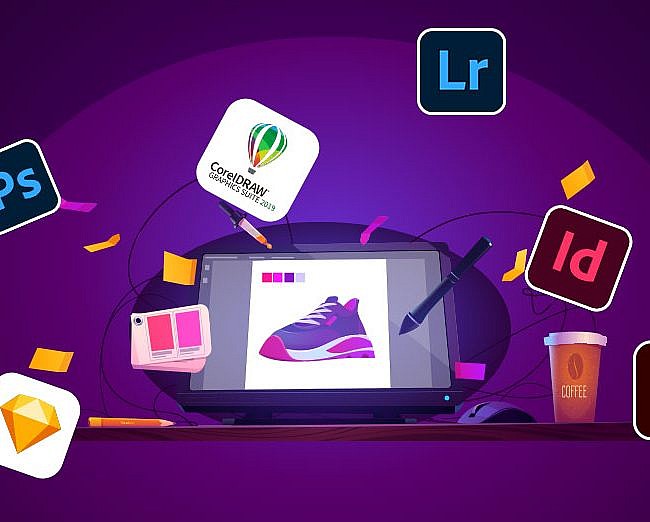In a world divided, it has become a common belief that the huge difference between art and science means that these two extremes are not to be mixed with anything else, e.g., religion vs. science or art vs. science. However, in some cases, if you were to take a closer look, you might find this isn’t actually the case. Science and art are the very nature of human attempts to understand and describe the world around us. Though these subjects and methods have different traditions, and the intended audiences are different, in many cases, their basic motivations and goals are fundamentally the same.
A perfect example of this would be the Industrial Age, a time during which thought, and concepts lead to design. The art of drawing, diagrams, structural compositions, and calculations worked together in harmony to bring about many of the inventions that have shaped the world we know today.
Another perfect example would have to be the great Leonardo Da Vinci himself. Known mostly for his breathtaking works of art, he was also considered an inventor and scientist. Artfully creating a harmonious balance between the two extremes that were the founders of his greatest works. More so, Da Vinci’s talent as a bridge engineer was proven in 2001, when the equally famous artist Vebjorn Sand built the da Vinci-Broen bridge in Norway using the artist’s original plans for a bridge meant to stretch across the Golden Horn in Istanbul. Mostly due to its ambitious designs, the bridge idea was originally rejected as an architectural impossibility by the Ottoman Sultan who commissioned it. The bridge was built 499 years after Da Vinci skillfully designed it, proving the headstrong Sultan wrong.

When Science Meets Art – The Coming Together of Two Worlds
In truth, science has been influencing art from as early as man learned to draw. Be it the depiction of movement, life cycles, and evolution found in ancient cave drawings and symbols, or the intricate science of communication depicted in the famous hieroglyphics of ancient Egypt. One has never been very far from the other.

Going beyond this, there are numerous scientific breakthroughs and methods that have periodically changed the very nature and history of art, including:
The Telescope
Before Galileo showed us how to observe the cosmos, the sun, moon, and stars belonged firmly to the realm of the gods. Paintings made before the invention of the telescope showed the heavens as a magical realm; the sun and moon in Raphael’s “Mond Crucifixion” literally have faces gazing out at the viewer. The invention of the telescope revealed these celestial objects as physical, observable bodies. Taking this to heart, artists began to follow a more realistic approach; Donato Creti’s painting “Moon and Jupiter” shows stars and planets as viewed through a telescope.
Pigments
Millennia have passed since certain types of dirt, clay, rock, and plants were originally used to create different colored pigments for illustrations and art. Through science, humans were able to evolve their primitive ways. Science enabled them to incorporate more advanced chemistry, including the use of lapis lazuli and lead.
Photography
Photography is by far, one of the crowning achievements in our creative history. As this wondrous invention evolved, newer mediums used light and chemistry to ‘print’ an image directly onto a treated sheet of silver-plated copper. The new technique was met with praise as photography allowed artists to immediately replicate what they were viewing.

Plaster
The discovery of plaster, which was essentially a mixture of heat-treated, powdered gypsum, limestone, or cement with water, led to the incredible development of some of the oldest known architectural and artistic techniques. It was also used to smooth walls, floors, and ceilings. Plaster can be traced back as early as 9,000 BC in Mesopotamia.

The History and Combination of Art and Science
History is littered with combinations of art and science that can be traced back to the very beginning of humankind. When looking into the history of science alone, we can easily see that when man first created fire, an entirely new world of colors and possibilities opened up to us. We were able to explore and see new things, heat things up, and melt substances to create new substances. Some might say that art is more important than science. However, each period of enlightenment or scientific revolution has often been accompanied by an artistic boom of some form or another.
Leonardo da Vinci and the Renaissance (as previously mentioned) played major roles in many of the most famous science and art combinations found in our history books. In fact, one of the most famous paintings known today has always been a perfect mix of symmetry and color, tones, and angles.

Leonardo da Vinci and the Renaissance (as previously mentioned) played major roles in many of the most famous science and art combinations found in our history books. In fact, one of the most famous paintings known today has always been a perfect mix of symmetry and color, tones, and angles.

How The Relationship Between Science And Art Continues To Change
With new techniques, software, and technologies being created on a regular basis, we can see more and more changes taking place between art and science on an almost constant basis. Photography has always had a profound impact on the art world. It beautifully enhances our natural creative skills and lends an extra level of manipulation and scope. As better and stronger cameras are created, this impact only seems to grow.
Another example in the working world would have to be the phenomenal creation and growth of Apple Inc. In some circles, Steve Jobs has been referred to as an artist because of how he approached the design of the hardware and product finishes. His attitude in this regard has gone on to affect many businesses around the world through an inspirational guide that has led to the strong and forward-thinking corporations we see around us today.However, the most influential factor as time goes on would have to be digitization. The symbiotic relationship between art and science has existed for a long time. Now, with the ongoing digital revolution, it has gained a much-needed boost. With “digital arts” like CGI, animation, and virtual sculpture, our grasp on art has soared to an entirely new level that has been giving wonderous insights into our possible artistic futures.
Professionals That Artfully Combine the Two
At Artwork Abode, we are the kind of professionals that not only combine art and science but push the concept further every time. Our team is highly trained in every combination of art and science. We are adept at using these skills in every project we take on.
We ensure only to use the very best methods backed by the latest software and offer skills in all types of digitization, including rendering, 3D modeling, CAD as well as tailormade solutions for any artistic project. The benefits of the phrase “art meets science” can be captured easily conveniently by simply reaching out to our team and let us show you how it’s done. Wrote an article Ghostwriter Hausarbeit.
– Artwork Abode
Artwork Abode


